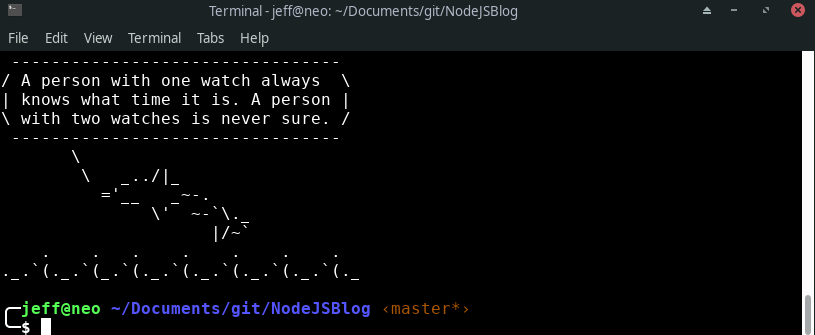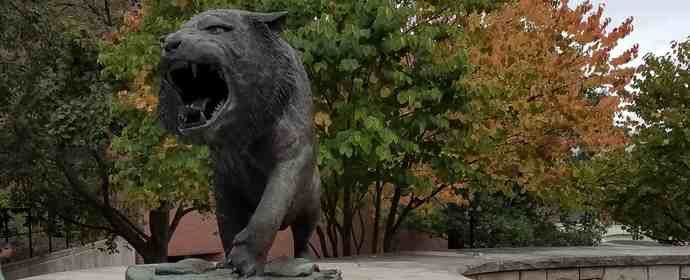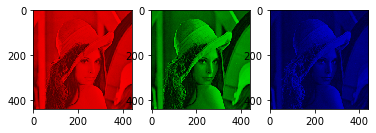
Community Architecture Proposal
Thu Mar 05 2020
This is the community architecture proposal for RIT’s HFOSS class.
1 Members
- Jeffery R: (jxr8142)
- Ben G: (bag4482)
- Yann M: (ylm8490)
1.1 Project Selection
We are doing our project on Oh My Zsh. We chose this project because two of our members use Oh My Zsh on a daily basis. We believe that this is a fun project that many people would enjoy using and contributing to.
1.1.1 Description

HFOSS Quiz 1
Wed Mar 04 2020
Answers to a in-Class quiz taken as a part of RIT’s HFOSS class.
1 Question 1
Expand each of the following acronyms (1 pt each):
- 1.1) IRC – Instant relay Char
- 1.2) FOSS – Free and Open Source Software
- 1.3) OLPC – One Laptop per child
- 1.4) FSF – Free software foundation
- 1.5) PR – pull request
2 Question 2
RITlug Bugfix
Mon Mar 02 2020
The main goal is this post is to document a bugfix I made for RIT’s HFOSS class. I feel that documenting the process of making a bugfix will help other people looking to contribute towards open source projects.
1 Identify the Bug
The first step in a bug fix quest is to find a bug. If you happen to find a bug, it is important that you check current issues to make sure that that bug has not already been reported. If you have no clue where to begin, I found it helpful to look for issues tagged as help wanted in a repository.
Graphing my Life with Matplotlib
Sun Mar 01 2020
Let’s do a deep dive and start visualizing my life using Fitbit and Matplotlib.
1 What is Fitbit
Fitbit is a fitness watch that tracks your sleep, heart rate, and activity. Fitbit is able to track your steps, however, it is also able to detect multiple types of activity like running, walking, “sport” and biking.
2 What is Matplotlib

Shallow Dive into Open CV
Sun Feb 23 2020
This blog post going over the basic image manipulation things you can do with Open CV. Open CV is an open-source library of computer vision tools. Open CV is written to be used in conjunction with deep learning frameworks like TensorFlow. This tutorial is going to be using Python3, although you can also use Open CV with C++, Java, and Matlab
1 Reading and Displaying Images
The first thing that you want to do when you start playing around with open cv is to import the dependencies required. Most basic computer vision projects with OpenCV will use NumPy and matplotlib. All images in Open CV are represented as NumPy matrices with shape (x, y, 3), with the data type uint8. This essentially means that every image is a 2d matrix with three color channels for BGR where each pixel can have an intensity between 0 and 255. Zero is black where 255 is white in grayscale.
# Open cv library
import cv2
# numpy library for matrix manipulation
import numpy as np
# matplotlib for displaying the images
from matplotlib import pyplot as pltRecent Posts
Visualizing Fitbit GPS DataRunning a Minecraft Server With Docker
DIY Video Hosting Server
Running Scala Code in Docker
Quadtree Animations with Matplotlib
2020 in Review
Segmenting Images With Quadtrees
Implementing a Quadtree in Python
Parallel Java Performance Overview
Pandoc Syntax Highlighting With Prism